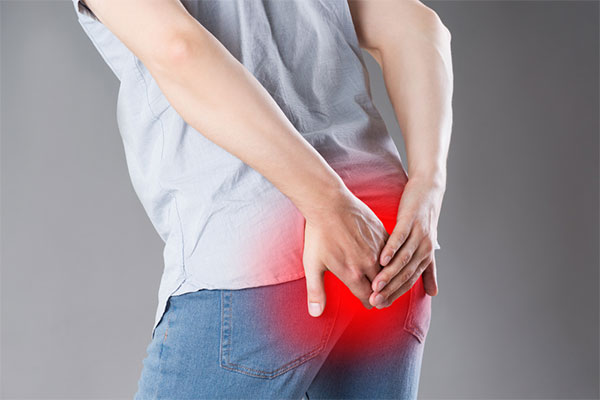Learn About Haemorrhoid
Learn About Haemorrhoid
Haemorrhoid is a common anal disease. Patients who have haemorrhoids suffer from bleeding during bowel movements, prolapse of haemorrhoids and pain at the anus. Not all bleeding during bowel movements are caused by haemorrhoids. Some resulted from other colorectal pathology e.g. cancer, inflammation, diverticulum, etc. Hence, colonoscopy is included in the management of haemorrhoids.
Causes of Haemorrhoids
The exact causes are not confirmed. Chronic constipation, chronic straining, the lack of dietary fibre from fruits and vegetablesin in one's diet, prolonged sitting, pregnancy, old age and genetic hereditary may contribute to the formation of haemorrhoids.
The cushion of tissue filled with veins, situated at the upper anal canal, is a tissue found in all normal human beings. The enlarged, bleeding and prolapsed cushion of tissue is regarded as haemorrhoid.
Types of Haemorrhoids
| Internal Haemorrhoids | Haemorrhoids above the anal dentate line |
| Intero-external Haemorrhoids | A mixture of internal and external haemorrhoids |
| External Haemorrhoids |
Haemorrhoids below the dentate line are like the extra skin at the anal opening. Once embolism happens (i.e. blood coagulation in the haemorrhoids), patients will feel uncomfortable whether sitting or standing. |
Common Symptoms of Haemorrhoids Anal Bleeding During or After Defecation
- Prolapse
- Anal itching
- Feeling painful when the haemorrhoids are strangulated and thrombosed
Other causes of anal bleeding colorectal cancer
- Polyps
- Anal fissure
- Anal fistulae
- Perianal abscesses
- Inflammatory bowel disease
Examinations by Doctors are Necessary
Consultation, digital rectal examination (DRE) and anoscopy help defining the type sand stages of haemorrhoids in order to find out the appropriate treatments. Colonoscopy is usually needed to exclude the possibility of other colonic pathology, especially cancer.
Treatments
Treatments include conservative treatments and surgery. Choice of treatments depends on the symptoms, stages and types of haemorrhoids.
Local treatment:
Suitable for early haemorrhoids which only bleed but do not prolapse.
- Haemorrhoid ligation
- Injection of sclerosant
- Haemorrhoid artery ligation (HAL)
Haemorrhoidectomy:
Suitable for serious haemorrhoids such as prolapsed haemorrhoids, thrombosed and strangulated hemorrhoids or haemorrhoids that do not turn better after conservative treatments.
- Safe and effective
- Post-surgical complications include damages of sphincter muscle, fecal incontinence and narrowing of anus. These complications are rare in modern surgery
- Surgeries such as stapled haemorrhoidectomy usually take place under general or local anesthesia
Open diathermy haemorrhoidectomy:
Effective in curing all kinds of haemorrhoids. Internal and external haemorrhoids can be excised simultaneously. Suitable for patients who suffer from serious external haemorrhoids.
- The procedure takes 30-45 minutes
- Post-surgical wound pain at the anus lasts for a few days to 1 week and can usually be controlled by painkillers.
- Closing up of wound takes approximately 6 weeks.
Stapled haemorrhoidectomy:
Disposable surgical instruments
- Applicable to internal haemorrhoids of Grade 3 and 4
- The procedure takes 30-45 minutes
- The haemorrhoid is pushed 3-5cm back into the anus
- Excises the mucous membrane of the prolapsed internal haemorrhoid
- Cut the blood supply of the mucous membrane of the external haemorrhoid so that it will shrink gradually.
- Excises and fixes simultaneously
- The slight post-surgical discomfort will last for a few days. No pain or wounds at the anus.
Comparison between the Two Surgery
| Open diathermy haemorrhoidectomy | Stapled haemorrhoidectomy | |
| Choices of Surgery | Excision of the haemorrhoid by diathermy. | Excise and fix the anal mucous membrane by stapled haemorrhoidectomy |
| Intensity of Pain | Wound pain at anus is more intense. | Short-term and slight discomfort |
| Handling of wounds | As the wound is exposed, cleaning of wound after each bowel movement and a special cushion may be needed. | No special caring is needed as the wound is not exposed. |
| Recovery Time | Longer | Shorter |
| Recurrence rate within 1 year | 1% | 8% |
| Fee | Lower | Higher |
Prevention of Haemorrhoids
The best way is to maintain a healthy lifestyle:
- Avoid straining during bowel movements
- Apart from eating abundant vegetables, fruits and cereals, drink sufficient fluid to soften the stools and to maintain a regular bowel habit.
- Exercise regularly to promote blood circulation.
- If long hours of sitting are required at work, try to take a rest by standing or walking for awhile.
Grading of Internal Hemorrhoids by Degree of Prolapse
| Stage 1 | The haemorrhoid bleeds but does not prolapse from the anus. |
| Stage 2 | The haemorrhoid protrudes upon defecation but spontaneously reduces. |
| Stage 3 | The haemorrhoid protrudes upon defecation but can be pushed back with a finger. |
| Stage 4 | The haemorrhoid protrudes from the anus all the time, and cannot be pushed back into the anal canal. |
*The above information is for reference only, please consult your doctor for detail.

 3405 8288
3405 8288

